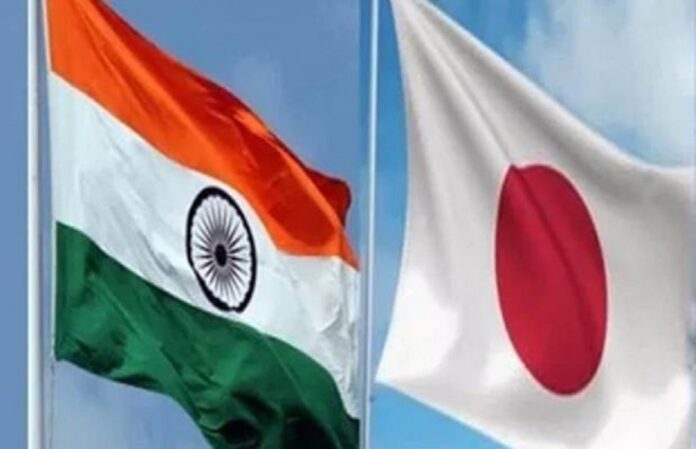The room for improvement in relations maritime between the two partners, Japan and India, is huge. Japan is considered to be part of India’s Great Neighborhood, but keep in mind that Japan and India are almost 6,000 km apart within the confines of mainland Asia.
Maritime relations between two of the world’s largest economies are therefore based on an imaginative contraction of geography as a symbol of closeness to ensure a prosperous neighbourhood. India is devoting immense enthusiasm to the East Asian region through its Middle East Engagement Policy (AEP).
Relations with Japan, the Republic of Korea, Russia and Taiwan have never been better, due to the need to compete with and ultimately try to topple China’s overwhelming and oppressive hegemony, which has been astutely reflected in the events that have unfolded as a result of the confrontation in the Galwan valley, in the territory of the Indian union of Ladakh.
In this regard, it is important to outline the trajectory of the growth of relations between India and Japan, especially in the maritime field. Currently, the cooperation between New Delhi and Tokyo in the waters that separate them includes the India-Japan naval exercises, that is, the JIMEX, the joint port development aimed at helping the emerging countries of the Indian subcontinent, such as Sri Lanka, with Japan and India as partners on equal terms, and Japanese investments in India’s maritime sphere, such as the financing of infrastructure projects in the Indian islands of Andaman and Nicobar through its Official Development Assistance (ODA) program ).
The ODA program involves the provision of soft loans through the Japan International Cooperation Agency (JICA) at nominal interest rates, and India has been one of the main recipients of Japanese loans. The scope of mutually beneficial joint investments for Japan and India versus countries in the region can be explored. For example, Japan is building a highway in southern Myanmar to facilitate exports to India, indicating a multi-pronged approach to the region where it already has an extensive program for its ODA, including highways, infrastructure projects and development corridors.
The United States seeks the support of Vietnam
Indian ports could be at the center of Japanese investment through the ODA program. Japan leads the connectivity pillar of India’s Indo-Pacific Oceans Initiative (IPOI) and ports remain the hub of all connectivity in the region. India’s maritime architecture is hierarchical and multi-layered, with ports, seabeds for joint exploration, and other types of ports, such as inland and dry ports, which can be helped by the usefulness of Japanese expertise.
it is important to outline the trajectory of the growth of India-Japan relations, especially in the maritime field
Since 2008, India and Japan have engaged in unilateral anti-piracy patrols off the Gulf of Aden. The two countries should consider joint operations to improve effectiveness in dealing with the threat of piracy in a region where, through the auspices of the Asia-Africa Growth Corridor (AAGC), Japanese and Indian investments are experiencing an increase.
India can learn from the Japanese patrols in the Horn of Africa and the Strait of Hormuz (Persian Gulf) through the P-3C aircraft of the Air Self-Defense Forces (ASDF) stationed at the Ambouli base of the ASDF in the coastal country of East Africa, Djibouti. Japan has also embarked on a two-year maritime security mission in the Persian Gulf to deal with increasing pirate activities in the area.
The unilateral deployment of the Japanese Maritime Self-Defense Forces (MSDF) in the Strait of Hormuz is a step forward in helping to secure the region, while India has sought access to the Japanese base of Djibouti to achieve strategic parity with China. The mission lasted two years.
The infamous case of the MV Alondra Rainbow by Indonesian pirates involved the hijacking of the Japanese Panamanian-flagged ship, the MV Alondra Rainbow, in October 1999. The Indian Navy and Coast Guard took it upon themselves to extract the pirates, which brought the case within the realm of Indian jurisdiction. The tragedy off the Indian coast highlighted the need for closer cooperation between Japan and India when it comes to piracy incidents.
Due to the dangerous nature of maritime environments in the South East and India, it is important to take into account the stubborn nature of non-state actors, maritime terrorists, pirates, etc., in troubled waters. The two maritime zones register some of the worst incidents of maritime debauchery. The number of hacking incidents, combined for the two regions, between January and May 2020 rose to 54with 5 incidents taking place around India’s vast 7,516 km coastline.
Since 2008, India and Japan have engaged in unilateral anti-piracy patrols off the Gulf of Aden
Maritime Asia regions are increasingly prone to natural disasters. Humanitarian aid, both joint and independent from other countries, has emerged as a critical imperative. In addition to the 2004 Indian Ocean tsunami and the 2011 Fukushima Daiichi nuclear reactor disaster, cyclones, volcanoes, and earthquakes are beginning to haunt the greater Asian region. With due regard to them, the need to ensure rapid and effective response to disasters requires having the proper mechanisms in place, and India and Japan would do well to consider joint responses to disasters and invite other allies and partners from the region to promote their cause.
India and Japan are very cooperative in the Indian Ocean. The Maritime Partnership Exercise (MPEX) is a unique venture between the two countries to enhance understanding between the IN and JMSDF within the Indo-Pacific, while the JIMEX (Japan-India Maritime Exercise) has become an annual standard . In addition, the two countries will benefit from a Japanese presence in the Indian Ocean that aligns maritime security with the same priority as infrastructure, energy security, food security, and other similar national interests. For Japan, the Indian Ocean region is welcoming and its leaders will have to choose wisely.
Disclaimer: The opinions and views expressed by the author do not necessarily reflect the views of the Government of India or Defense Research and Studies
Article republished within the framework of an agreement with Dras (Defense Research and studies) to share content. Link to original article:https://dras.in/analysing-regional-maritime-pursuits-of-japan-and-india/



![[Img #74675]](https://thelatestnews.world/wp-content/uploads/2024/12/They-discover-a-new-class-of-X-ray-sources-in-the-150x150.jpg)











Add Comment